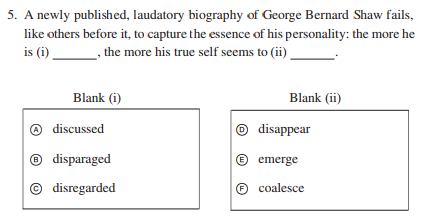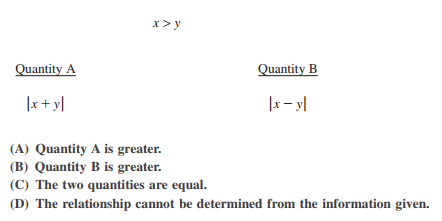
The GRE is a long and tricky test. So how can you make sure you’re using your GRE time wisely? How long should you spend on each question? Are there ways to spend less time on certain parts of the exam?
In this guide, we give you 11 expert tips for using the GRE time to your advantage. But first, let’s go over the total GRE test time as well as how much time you have on each section and question.
GRE Test Time: How Long Is It?
First off, what is the GRE test duration? Excluding breaks, the computer-delivered GRE is about three hours and 45 minutes long. The paper-delivered GRE, which is only offered where the computer GRE is unavailable, is a little shorter: about three hours and 30 minutes long (again, excluding breaks).
The GRE is divided into three section types: Analytical Writing (AW), Verbal Reasoning, and Quantitative Reasoning. On test day, you’ll have one AW section, two Verbal sections, and two Quant sections. On the computer GRE, you’ll also have one unscored experimental or research section (which will be either an extra Verbal or Quant section).
On both versions of the GRE, AW always comes first, while the rest of the sections are randomized. (The only section not randomized is the research section, which, if present, comes at the end of the test.)
Below is a breakdown of all GRE sections and their time limits for both the computer- and paper-delivered GREs:
Quick side note: we've created the world's leading online GRE prep program that adapts to you and your strengths and weaknesses. Not sure what to study? Confused by how to improve your score? We give you minute by minute guide.
You don't NEED a prep program to get a great GRE score. But we believe PrepScholar is the best GRE prep program available right now, especially if you find it hard to organize your study schedule and don't know what to study.
Click here to learn how you can improve your GRE score by 7 points, guaranteed.
Computer-Delivered GRE Time
| Section | # of Sections | Time per Section | # of Questions per Section | Time per Question |
| Analytical Writing | 1 | 60 mins | 2 tasks | 30 mins |
| Verbal | 2 | 30 mins | 20 questions | 1 min 30 secs |
| Quantitative | 2 | 35 mins | 20 questions | 1 min 45 secs |
| Unscored Experimental or Research Section* | 1 | 30-35 mins | 20 questions | 1 min 30-45 secs |
| Break** | 1 | 10 mins | — | — |
Source: ETS.org
*You’ll have either an unscored, unidentified experimental section or an unscored, identified research section, both of which take the form of an additional Verbal or Quant section. The experimental section can appear anytime after AW, while the research section always comes at the end of the test.
**This break comes after the third section (halfway through the test).
Paper-Delivered GRE Time
| Section | # of Sections | Time per Section | # of Questions per Section | Time per Question |
| Analytical Writing | 1 | 60 mins | 2 tasks | 30 mins |
| Verbal | 2 | 35 mins | 25 questions | 1 min 24 secs |
| Quantitative | 2 | 40 mins | 25 questions | 1 min 36 secs |
| Break* | 1 | 10 mins | — | — |
Source: ETS.org
*This break comes after the second section.
As you can see in these charts, how much (estimated) time you get per question varies depending on the type of GRE you take (computer or paper) and the section.
You get slightly more time per question on the computer GRE than you do on the paper GRE. This is due to the differences in time constraints and number of questions: on the paper GRE, you get five more questions and five more minutes on each Verbal and Quant section (with the trade-off being that you don’t get an unscored experimental or research section).
The AW section length is always the same. With both versions of the GRE, you get two 30-minute writing tasks, giving you a total of 60 minutes for the section. In addition, you’ll always have a 10-minute break, which comes slightly earlier on the paper GRE than it does on the computer GRE.

4 Tips for Using Your GRE Time Wisely
While the total GRE test duration is long, you don’t actually get a lot of time to answer each question. This is why it’s so important to think about how you’ll handle the GRE time before you take the test. Below, we give you four general tips for using your GRE test time wisely.
#1: Skip Difficult Questions and Return to Them Later
As you take the GRE, you might be tempted to attack each and every question right away—but hard ones can take up more time than they need to. Therefore, don’t stay on questions that are giving you a lot of trouble or that you have no idea how to approach. Instead, skip them and move on to questions you can work through.
This tactic keeps you from spending too much time trying to solve a single question and lets you switch your focus to other questions you can more easily and more quickly solve.
That said, don’t immediately skip questions that appear hard. Attempt each one by seeing whether you can figure out an approach for it. If after about 30 seconds you still haven’t made any headway, mark the question and proceed to the next one.
Once you get to the end of a section, use the remaining time to go through the questions you’ve marked and either attempt to re-solve them (if you have a lot of time left) or make a guess (if you have very little time left).
#2: Use Process of Elimination
If you’re having trouble choosing an answer to a multiple-choice question, use the process of elimination to narrow down your choices and increase your chance of picking the right one.
With this strategy, you’ll “cross out” any answer choices that are clearly incorrect. On Verbal, these could be any vocabulary words that don’t make sense in the sentence given or any statements that contradict what’s written in the passage. On Quant, these could be any numbers or variables that obviously don’t work with the equation or problem.
Since most GRE multiple-choice questions have five answer choices, using the process of elimination can potentially raise your chance of getting a question right from 20 to 50 percent!

#3: Don’t Work a Problem to Death
Here’s what I mean by this: don’t feel as though you must keep working on a problem simply because you’ve already spent a lot of time on it. Doing this will only waste your time in the end by keeping you from attacking other questions you can answer more quickly and with far less effort.
Though you should try to answer all GRE questions (there are no penalties for wrong answers!), you’ll likely get a higher score if you use your time to primarily attack easy problems you can for sure solve instead of picking apart harder questions you have no idea how to solve.
This idea applies to strategies, too: if a strategy you’re using doesn’t seem to be working, try a different one. For example, if the algebra you’re using to solve a math problem isn’t working, go ahead and switch to a new strategy, such as plugging in answers or plugging in numbers (see the “Quantitative Reasoning Time Tips” section below for details).
#4: Pick One Letter to Be Your “Guessing” Letter
As I mentioned above, you don’t lose any points for incorrect answers on the GRE. Therefore, you’ll give yourself your best shot at getting a high score if you answer every question—even if you have no idea what the correct answer is!
If you aren’t sure whether you’ll be able to answer all questions before time runs out (and aren’t aiming for a perfect score), make sure you have a “guessing” letter. This is the letter you’ll use to quickly choose an answer choice for questions you’re either clueless about or have no time to solve. For instance, if my guessing letter were B, I’d select B for all unanswered questions I have remaining.
Most GRE questions are multiple choice (often with five answer choices), so for the most part you’ll have at least a 20 percent chance of getting a question right, even if blindly guessing.
Note that there are no letters beside answer choices on the computer GRE (as there are on the paper GRE); however, you can just think of the first answer choice as “A,” the second answer choice as “B,” and so on.
GRE Time Tips for Each Section
Now that we’ve given you some general GRE test time tips, here are seven tips for making the most of your GRE time on each section.
Want to improve your GRE score by 7 points? We have the industry's leading GRE prep program. Built by world-class instructors with 99th percentile GRE scores, the program learns your strengths and weaknesses through machine learning data science, then customizes your prep program to you so you get the most effective prep possible.
Try our 5-day full access trial for free:

Analytical Writing Time Tips
Let’s start by going over how to get the most out of your AW section time limit.
#1: Outline Your Essays
You’ll have 30 minutes for each AW task. Since this isn’t a lot of time, you might be tempted to jump straight into writing. But the truth is that you’ll ultimately write better essays and save time coming up with ideas if you use the first few minutes to outline your response.
On your scratch paper, jot down the three or so key ideas you want to discuss. For example, for the “Analyze an Issue” task, you could make note of three reasons you disagree with the issue as well as some examples you can use to support your stance.
No matter what you write about, try not to spend more than three minutes outlining each essay. Too much time spent on outlining will take away from your writing, but too little time means your essay will likely lack the structure and ideas needed to score highly on AW.
#2: Write the Intro and Conclusion Last
A good AW essay typically follows the five-paragraph format with an introduction, three body paragraphs, and a conclusion. But you don’t need to write your essay in this exact order—in fact, you’ll save time if you skip the intro and conclusion and get down the body paragraphs first.
If you start with the intro—before you know exactly what you’ll write about—you might find it difficult to think of ideas, or focus too hard on coming up with a catchy hook. Therefore, it’s best to start with the meat of your argument and then use your remaining time to write out the less important intro and conclusion.
Having the body paragraphs handy will ultimately help you write your intro and conclusion faster since you can simply summarize what you’ve already written.

Verbal Reasoning Time Tips
Next up are our top tips for taking advantage of your GRE time on the Verbal section.
#3: Pick & Practice a Passage-Reading Strategy
Reading Comprehension questions can take more time than needed if you don’t know how to effectively approach passages, so be sure to choose and practice a passage-reading strategy ahead of time.
The best method is to skim the passage first to get a feel for the main ideas before carefully reading the question. Another solid method is to read the question in detail and then skim the passage, taking care to note any details relating directly to the question. Both of these methods can work well for you, as long as you practice your chosen strategy with official GRE practice tests and other high-quality Verbal resources.
A third strategy, which involves closely reading the passage, exists, but we strongly advise against using it. This strategy isn’t as effective as the two above and ultimately wastes time!
#4: Use Your Own Words
In Text Completion and Sentence Equivalence questions, thinking of your own words to fill in the blanks before you look at the answer choices can save you time and increase your odds of getting more questions right. But how?
Let’s look at an example. Here’s an official Text Completion question with two blanks:

In this example, we see there is a colon; this indicates that the first part of the sentence will essentially introduce the second part (i.e., the part after the colon).
Now, let’s look closely at the sentence: the first half mentions that the biography fails to capture the essence of playwright George Shaw. We can therefore assume that the second part of the sentence will explain how the biography fails—in other words, how it doesn’t show Shaw’s true personality.
Using our own words, then, we could say, “The more he is written about, the more his true self seems to fade.” The only two answer choices that match the meanings of our words are “discussed” and “disappear.” A quick glance at the other words reveals that none of them share any similarities with the ones we’ve chosen, so we immediately know A and D must be correct.
One trick to help you come up with potential words is to identify the overall tone of the sentence. For example, does the sentence sound critical? Hopeful? Regretful? Knowing the tone can give you a clearer idea as to whether you should use positive or negative words to fill in the blanks.
#5: Spend Less Time on Vocab Questions
On Verbal, you’ll have a mix of questions: some (Text Completion and Sentence Equivalence questions) will focus on specific sentences, while others (Reading Comprehension questions) will focus on passages. Because Reading Comprehension questions involve more steps—you have an entire passage to read!—we recommend giving yourself more time on these questions than on vocabulary ones.
According to the chart above, you’ll have about one minute and 30 seconds per Verbal question. However, you’ll ultimately give yourself a better shot at a high Verbal score if you spend about 30-45 seconds on vocab questions and up to two and a half minutes on Reading Comprehension questions.

Quantitative Reasoning Time Tips
Finally, here are our two best tips for effectively using the GRE Quant time limit.
Want to improve your GRE score by 7+ points?
Check out our best-in-class online GRE prep program. We guarantee your money back if you don't improve your GRE score by 7 points or more.
PrepScholar GRE is entirely online, and it customizes your prep program to your strengths and weaknesses. We also feature 2,000 practice questions, official practice tests, 150 hours of interactive lessons, and 1-on-1 scoring and feedback on your AWA essays.
Check out our 5-day free trial now:
#6: Plug In Numbers and Answers
If you’re struggling to solve a math problem and aren’t sure how to approach it, plug in numbers or plug in answers. These two strategies can save you valuable time and get you the answer quickly when you’re not sure how to solve a problem any other way.
In general, you’ll plug in answers for multiple-choice questions. This means you’ll plug in each answer choice one at a time to see which one works correctly with the problem. Always start with answer choice C (or whatever the middle value is). If this answer choice doesn’t work, you can then determine whether to work your way up (with higher values) or down (with lower values).
As for plugging in numbers, you can usually use this strategy for Quantitative Comparison questions and any questions containing variables.
For Quant Comp questions, you’ll often need to plug in multiple numbers to test out various cases. To ensure that the inequality or equation holds true for all possible cases, choose radically different numbers, such as a large and a small number, a positive and a negative, a whole number and a decimal, etc.
Confused? Let’s look at an example. Here’s a Quant Comp problem from an official GRE practice test:

In this problem, it’s difficult to analyze the relationship between Quantity A and Quantity B without using real numbers as stand-ins for the variables x and y. So let’s test the relationship by plugging in numbers.
We’ll start with a pair of numbers in which one number is large and the other is small. Let’s use 100 and 1 (x = 100, y = 1). Using these numbers, we get Quantity A = 101 and Quantity B = 99. In this case, the correct answer is A.
Now, let’s try another set of numbers. This time we’ll say x = 5 and y = -10. In this case, Quantity A comes out to 5, and Quantity B comes out to 15. Unlike before, the correct answer for this scenario is B.
Because the numbers we chose resulted in two different answers, we now know that the real correct answer must be D: The relationship cannot be determined from the information given.
#7: Use the Calculator Sparingly
Though you can use the on-screen calculator for all Quant questions, avoid using it on questions that are faster to work through on your scratch paper. In other words, using the calculator when you don’t need to can waste more time than you think!
The trick here is to learn how to recognize which questions need the calculator and which ones don’t. In general, any math question requiring algebra doesn’t need a calculator. For example, most Quant Comp questions, especially those with variables and/or inequalities, are faster to solve without a calculator. On the other hand, questions requiring square roots or answers in exact decimals will probably need the calculator.
Be aware that using the calculator can sometimes unnecessarily complicate math problems. If a question and its answer choices use fractions, for example, it’ll be far easier to work with those fractions by hand than to convert them into lengthy decimals on the calculator.
Recap: Making the Most of the GRE Test Time
The GRE test duration for the computer version of the exam is about three hours and 45 minutes. The paper GRE’s test length is slightly shorter: about three hours and 30 minutes.
Both versions of the GRE have three major sections: Analytical Writing, Verbal Reasoning, and Quantitative Reasoning. On test day, you’ll get one AW section, two Verbal sections, and two Quant sections. With the computer test, you’ll also get an unscored experimental or research section in the form of a third Verbal or Quant section.
You’ll have 60 minutes for AW (30 minutes per task), 30 minutes for each Verbal section, and 35 minutes for each Quant section. (You get five minutes more on each Verbal and Quant section with the paper GRE.) You’ll generally have anywhere from 90 to 105 seconds per question.
To make the most of the GRE test time, be sure to skip difficult questions, use the process of elimination, stop working a problem if you’re not getting anywhere, and pick a guessing letter.
You should also find ways to use your GRE time wisely for each section. Popular tricks include outlining your AW essays, picking a passage-reading strategy for Verbal, and plugging in answers and numbers for math questions.
Using the 11 tips we’ve given you above, you should now be ready to attack the GRE test time with total confidence!
What’s Next?
Got more questions about GRE timing? Get expert advice by reading our guides on how long the GRE is and how long you should study for the exam.
Want more strategies for the GRE? Check out our compilation of the 34 best GRE tips so that you can learn how to increase your odds of getting a passing score on test day!
Waiting on GRE scores? Or need to know when they expire? We explain how long GRE scores take to be released and how long they’re valid for.
Ready to improve your GRE score by 7 points?
We've written a eBook about the top 5 strategies you must be using to have a shot at improving your GRE score.
Download it for free now:

